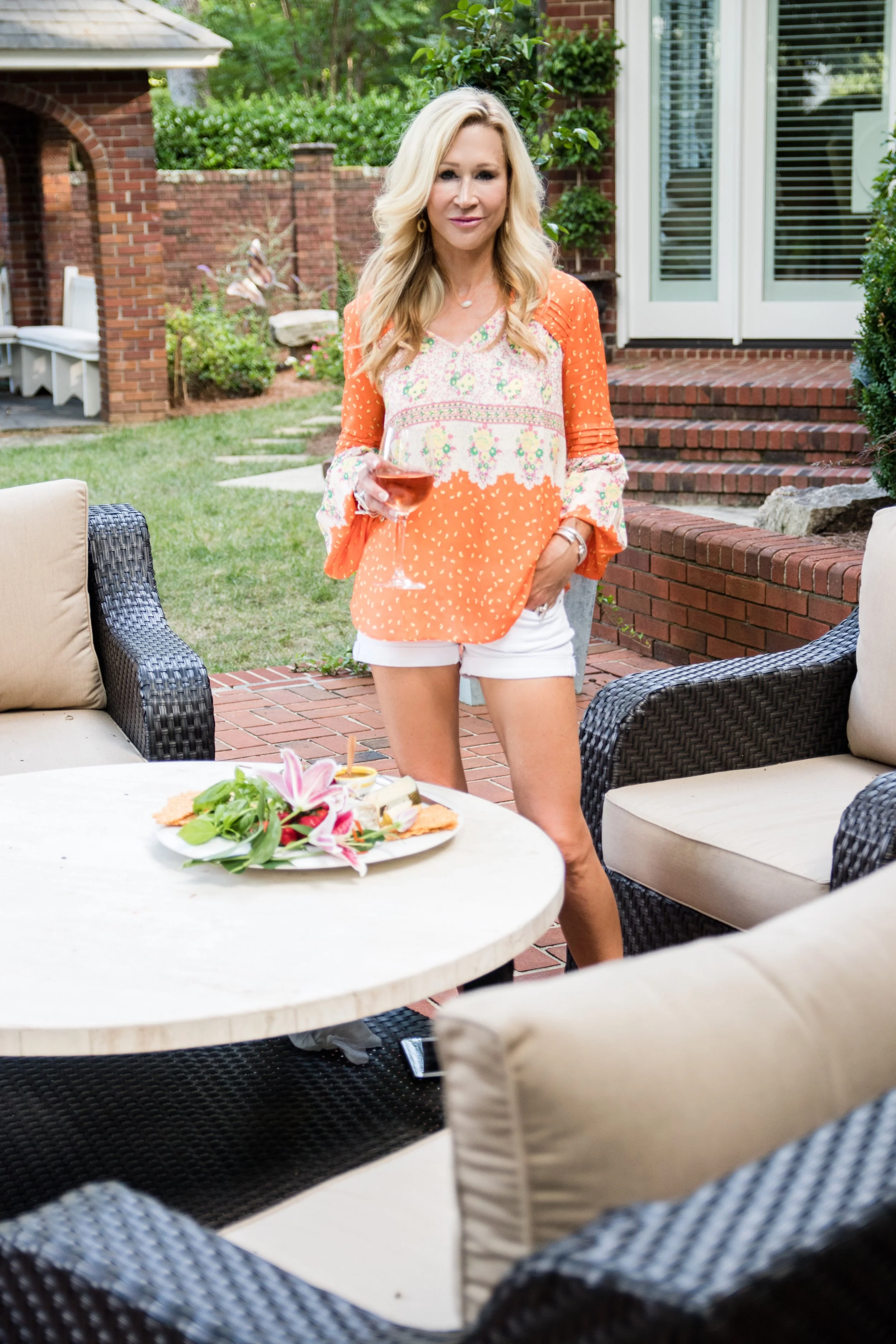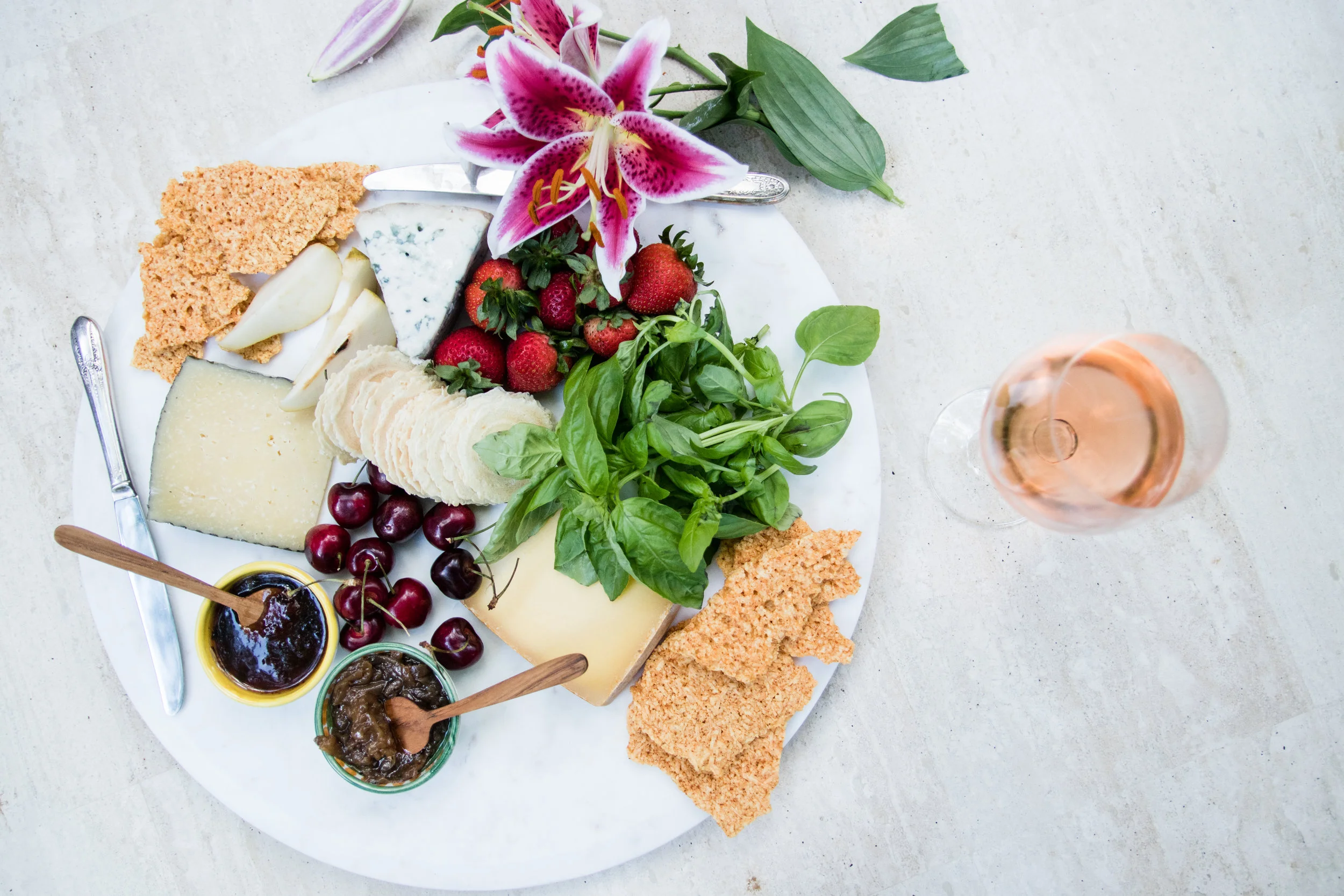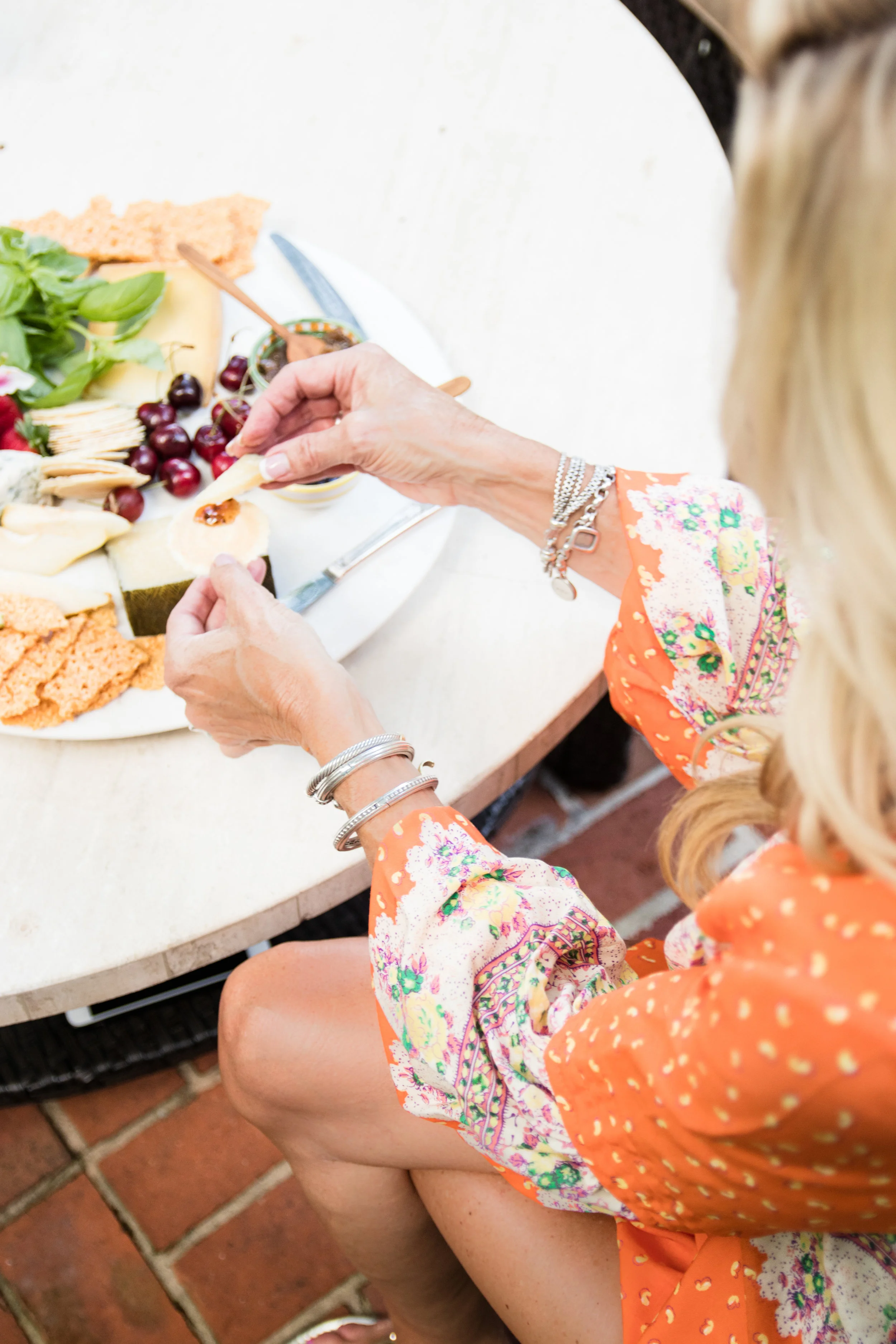Making a Summer Cheese Board
If left to my own devices, I would probably have cheese and a glass of wine for dinner every night! Making a fabulous cheese board is also one of my favorite ways to entertain. It's easy, beautiful and delicious!
I have a (huge) collection of cheese boards, platters, cheese knives, baskets (to hold crackers and bread), small bowls (for jams and spreads), and tiny spoons, not to mention the ever changing array of condiments and crackers that fill my pantry and refrigerator and are used to accompany the cheeses. I'm also kind of obsessed with fun cocktail napkins printed with cute sayings (like these from Ben's Garden)!
Making a cheese board isn't at all complicated and it only requires a quick trip to the grocery store. You'll find that people are happy to nibble on most any kind of delicious cheese, so you really can't go wrong. However, if you want to wow your guests with a more thought out cheese board, here is a basic guide to help you choose.
Use seasonal cheeses: During the summer months, cheese takes on a grassier flavor. Plus, goats and sheep only produce milk in the spring and summer, so it's the ideal time to enjoy soft cheese varieties like chevre, feta, and ricotta.
Plan ahead: You want to serve your cheeses at room temperature,so plan accordingly. Hard cheeses should be removed from the refrigerator about an hour ahead of time and half an hour for soft cheeses.
Don't mix flavors - serve each cheese and condiment with their own knife. Inevitably, your guests will mix them up, but you can start off with a different utensils and refresh if things get too messy.
Don't forget the accompaniments - Several seasonal summer fruits such as strawberries, peaches and cherries, nuts such as Marcona almonds, toasted walnuts, spiced pecans (try this recipe) or a variety of mixed nuts. Preserves and jams go perfectly with cheese. Some of my favorites are hot pepper jelly (try this strawberry jalapeño jelly), Bourbon Peach Onion Jam, anything from Stonewall Kitchen, Braswell's Fig Preserve, or any homemade preserve or jam!
Serve your cheeses with a variety of crackers (these from Raincoast Crisps are my favorites) and/or bread. It's also a good idea to consider offering a separate platter with gluten free crackers for any guests that may have a gluten intolerance.
Choose a variety of textures: Include 3 - 5 cheeses with different consistencies (or more if you have a large crowd and want to experiment). Here is a basic breakdown of cheese types:
Fresh cheeses - Fresh cheeses, like cream cheese, ricotta, Neufchatel, farmer’s, goat — anything white, soft and spreadable don’t have fermentation, mold or preservatives to help keep them fresh, so you’ll need to enjoy them more quickly.
Mozzarella - Italian cheese made from Italian bufallo milk
Burrata (my favorite) Burrata is a fresh Italian buffalo milk cheese made from mozzarella and cream. The outer shell is solid mozzarella, while the inside contains stracciatella and cream, giving it an unusual, soft texture
Chévre - any French cheese made from goat's milk.
Washed rind cheeses - washed-rind cheeses are periodically cured in a solution of saltwater brine or mold-bearing agents that may include beer, wine, brandy and spices
Taleggio - an Italian semi soft cow's milk cheese
Firm Cheese - This category of aged cheeses is also known as Hard Cheese. They have more moisture and fat than extra-hard cheeses, but less than semi-firm cheeses. Cheddar is the most well-known example.
Manchego - a cheese made in the La Mancha region of Spain from the milk of sheep of the manchega breed. Official manchego cheeseaged for between 60 days and two years.
Swiss, and Cheddar
Hard Cheese
Parmigiano Reggiano - an Italian, hard granular cheese produced in the Emilia-Romagna region of Italy
Pecorino Romano - a hard, salty Italian cheese made from sheep's milk
Blue cheeses - cheeses that have had cultures of the mold Penicillium added so that the final product is spotted or veined throughout with blue
Roquefort - sheep's milk cheese from the South of France
Gorgonzola - veined Italian blue cheese, made from unskimmed cow's milk. It can be buttery or firm, crumbly and salty, with a "bite" from its blue veining (delicious with toasted walnuts)
Soft ripened cheese - made by allowing white mold to grow on the outside of a soft cheese for a few days or weeks.
St. Andre - a brand of French triple crème cow's milk cheese with a powdery white, bloomy skin of mold. It comes in a cute little box and is very decadent!
Brie - a soft cow's-milk cheese named after Brie, the French region from which it originated
Camembert - a moist, soft, creamy cow's milk cheese. It was first made in the late 18th century at Camembert, Normandy, in northern France.
Semisoft cheeses - are those whose water content is generally between 36% and 45% and undergo an average aging process. For this reason semi-soft cheeses usually keep all the fresh milk flavors.
Fontina - an Italian cow's milk cheese. The best time to eat Fontina cheese is during the summer when the cows are moved to an altitude of 550 to 700 meters and fed only with rich grass to give it a distinctive aroma.
Make your cheese board a meal: Add a variety of charcuterie if you are in the mood for more than just a light snack. Pair cheeses with Prosciutto, assorted salamis, Bresaola, Chorizo, or Serrano ham.
Most importantly, don't forget to pour a fabulous glass of wine! Here is my Crazy Blonde guide to Rosé!
The cheeses on my cheese platter included, Valdeon (blue), Campo De Montalban, and Calvander from Chapel Hill Creamery (local) and all came from Whole Foods. I also love to garnish my cheese boards with seasonal fresh herbs.
Also, just a side note on fashion...if you would like to shop my blouse or similar, I've linked the one I'm wearing and similar below!
I hope this post has been helpful and informative...I learned so much from researching it! If you want to see more ideas for making cheese boards and more, follow my Pinterest Board called Grazing Boards, Cheese and Beautiful Appetizers.
Thanks so much for reading! Have a great week!
*most of my cheese definitions came from Wikipedia





